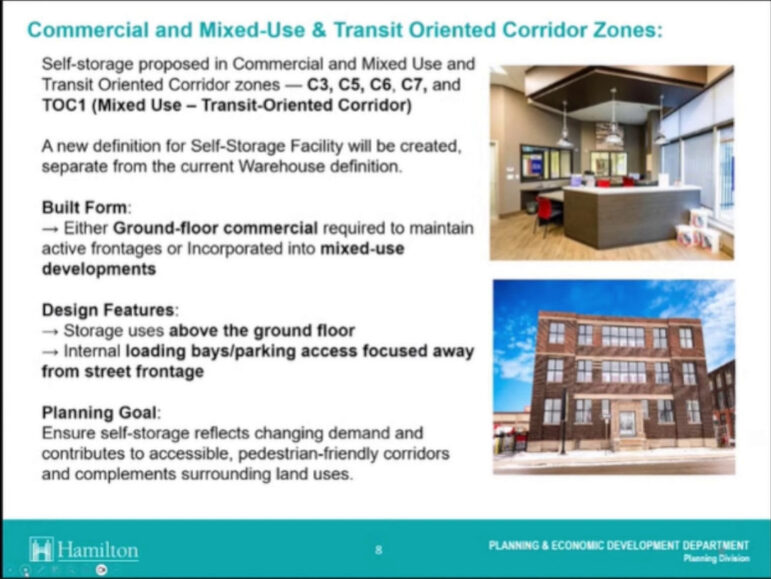Good evening, a quick blog-style post regarding the City of Hamilton’s ongoing review of self-storage zoning.
At Monday’s Development Industry Liaison Group meeting, city planners shared an update regarding the ongoing review of where self-storage facilities should be permitted.
The City is considering permitting self-storage in transit-oriented zones, with strict requirements that it maintain “active frontages” or be incorporated into mixed-use developments.

The City is wrapping up public consultation on self-storage. A date for a report to Planning Committee is not yet set.
I’m going to copy and paste from an article I wrote in February 2024 summarizing why self-storage is tied to intensification.
Self-Storage and Intensification
Ontario’s Municipal Property Assessment Corporation noted in 2023 that self-storage facilities support intensification because they allow people to live in condo units while storing things such as seasonal sports equipment:
“There are a number of factors contributing to the self-storage boom, such as smaller dwellings—particularly condominiums—providing less space to store personal possessions,” says Greg Martino, MPAC Vice-President and Chief Valuation and Standards Officer. “The pandemic may have also added to this trend, with more people working from home, looking to store items that have accumulated in their living spaces, downsizing or undergoing renovations.”
The self-storage increase is consistent with data released by MPAC in 2022, showing Ontario condominiums are 35% smaller on average than they were 25 years ago.
Increasing housing costs are also raising the demand for self-storage facilities.
